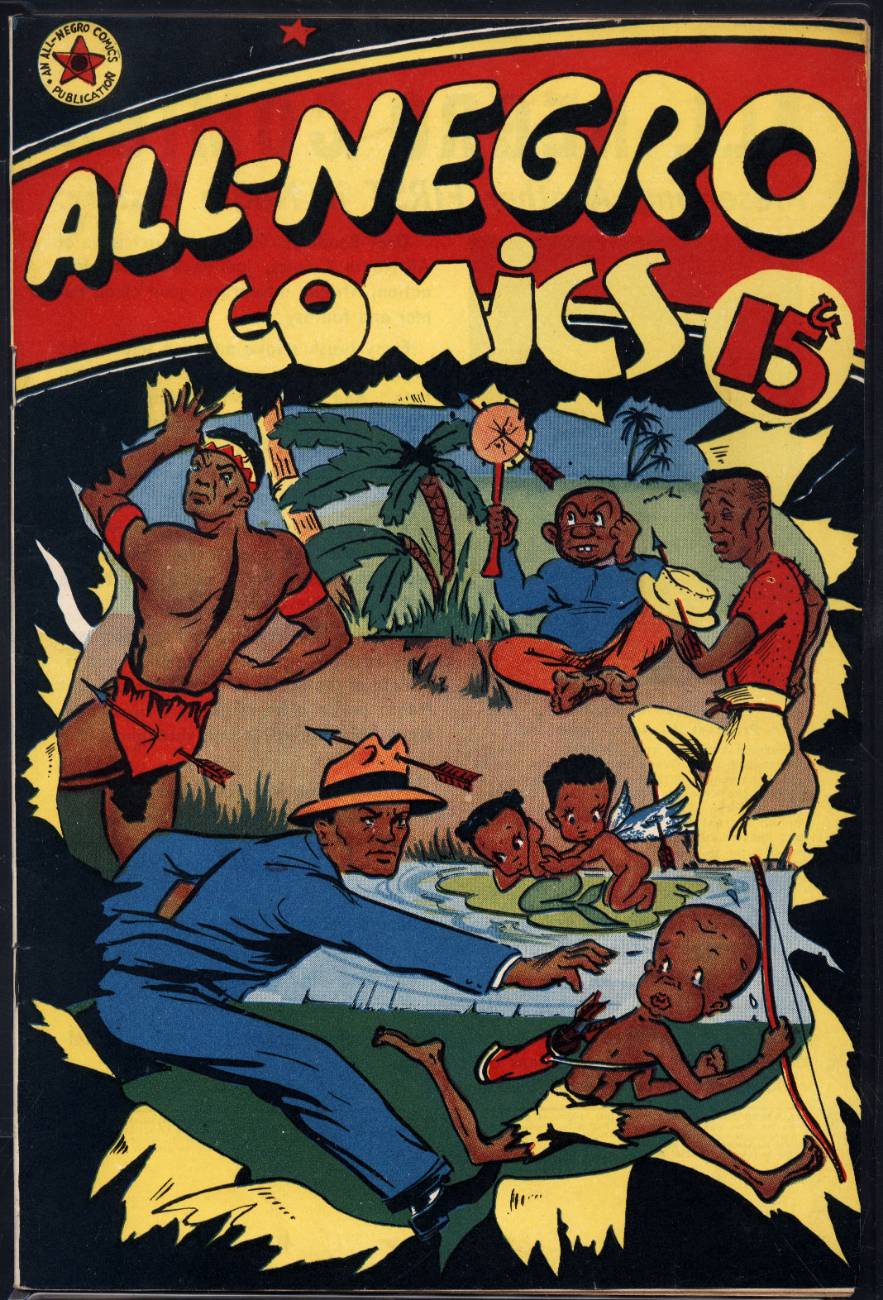Jim Crow Museum
1010 Campus Drive
Big Rapids, MI 49307
[email protected]
(231) 591-5873
 Q: I am curious as why the Jim Crow archive contains pictures from All-Negro Comics, the first comic created entirely by African Americans?
Q: I am curious as why the Jim Crow archive contains pictures from All-Negro Comics, the first comic created entirely by African Americans?
I would like to find out the reasons for including this image in such an archive?
~Rob G.
Brighton, England
A: Thank you for your inquiry about the work of the Jim Crow Museum.
There is a subjective quality to what is considered racist. There are objects in the museum that many people would not consider racist or racially offensive—and those same objects would cause others to condemn them as racist. This subjectivity does not hinder our work. Any and all objects in the museum are useful if they help us talk about race, race relations, and/or racism. Some of the best discussions in the museum occur when people have differing interpretations
The picture in question, All-Negro Comics issue #1, is a good example. Not all people will see the imagery as racist; however, some observers will be reminded of some “traditional” racist iconography. The museum is founded on the belief that there is value in honest, piercing dialogues. We employ a version of Visual Thinking Strategies, so we show visitors an object—for example, the comic book in question—and we ask, “What is it you see?” And, “Why is it that you see that?” And, “What else do you see?” Visitors listen to the expressed beliefs of other visitors. This helps us engage our visitors in deeper discussions about race.
Let me ask you this, what are the differences between the imagery in this comic and other imagery of African Savages, naked pickaninnies, banjo playing coons, or Stepin Fetchit Toms that were popular during that time? Forget for a minute what you know about the creation of the comic—yes, we factor that in later—and look at the image in the comic. What do you see?
This is what the museum does. It allows for conversations and the sharing of different perspectives.
Thank you again and I wish you good fortune with your research.
Franklin Hughes and David Pilgrim
Jim Crow Museum
2018